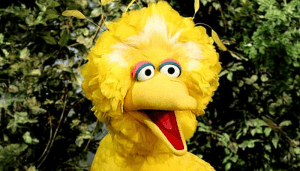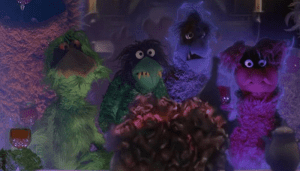Statler and Waldorf, the two curmudgeonly critics seated in the balcony, heckling from above, have become beloved figures in the world of The Muppets. With their wit as sharp as the tuxedos they occasionally don, the elderly duo have won the hearts of viewers since “The Muppet Show” first aired in 1976. Through their biting sarcasm and tongue-in-cheek humor, they offer a unique perspective, acting both as critics and entertainers. But what makes these old-timers such fascinating and enduring characters? In this tribute, we’ll delve into their origins, evolution, cultural impact, and enduring legacy within the Muppet universe.
Origins: Creation and Early Days

Conceived by Jim Henson, Statler and Waldorf were brought to life by puppeteers Richard Hunt and Jim Henson himself. Their names, inspired by two iconic New York City hotels—the Statler Hilton and the Waldorf-Astoria—represent affluence and a bygone era, perhaps a nod to their sophisticated yet cantankerous demeanor. The characters were designed with an air of nobility and crusty elegance, which perfectly matched their sophisticated but often crotchety commentary.
Statler, typically portrayed as the taller, slender member of the duo, sports a grey mustache and is usually seen in a blue suit. Waldorf is shorter, rounder, and has a bald head with a tuft of white hair, and he’s usually dressed in a brown suit. The visual contrast between the two adds to the dynamic and visually reinforces their distinct, complementary personalities.
The Stage: Contribution to “The Muppet Show”
Statler and Waldorf played a critical role in “The Muppet Show,” serving as a foil to the rest of the cast. Often interrupting with heckles and sarcastic laughs, they provided a unique meta-commentary on the show’s antics. Their humor was often self-referential, poking fun at the very nature of variety shows and adding an extra layer of depth that appealed to both children and adults.
Despite being perceived as critics, they were—and are—an integral part of the comedic machinery of The Muppets. Their dismissive critiques and exasperated sighs heightened the comedy, contrasting with the chaos and fervor on stage. This “balcony perspective” was a brilliant storytelling device, offering viewers a humorous critique of what they were watching without breaking the immersive world of the Muppets.
Cultural Impact: Catchphrases and Comedy
The acerbic duo is best known for their witty banter and memorable catchphrases. Expressions like “Boo!”, “That was terrible!”, and “Do you think this show is educational? No. Why? Because it’ll make you come back to school for more!” have cemented their place in comedic history. Their humor resides in the intersection of cleverness and simplicity, making it easily quotable and humorous across generations.
Statler and Waldorf’s humor transcends the screen, commenting on the nature of art and performance itself. They embody the voice of the critical viewer, the voice in the back of our minds that critiques and scrutinizes efforts and performances. Yet, even as they criticize, they remain invested, much like the audience of any show—they derive pleasure from their banter, indicating a deeply-rooted affection for the very thing they ridicule.
Evolution and Appearances: From Television to Film
Since their debut in 1976, Statler and Waldorf have evolved within The Muppet franchise, maintaining their signature humor while adjusting to new formats and audiences. They have appeared in numerous Muppet movies, such as “The Muppet Movie” (1979), “The Great Muppet Caper” (1981), and “The Muppets” (2011). Each film iteration saw them bringing their signature heckles, often positioned in humorous scenarios that placed them as reluctant insiders in the Muppets’ chaotic world.
Besides their film appearances, they have been part of various Muppet specials and series, such as “Muppets Tonight!” and the more recent “The Muppets” TV series (2015), where they continued their role as persistent hecklers. They even had their series on the internet titled “Statler and Waldorf: From the Balcony,” in which they provided their delightfully scathing movie reviews.
As technology and media evolved, so did their methods of critique. Their adaptation to modern platforms shows the characters’ versatility and timelessness. They are a testament to how classic characters can adapt within modern contexts while retaining their original charm and appeal.
Legacy: What Statler and Waldorf Represent
Statler and Waldorf are not merely hecklers in the balcony; they are patrons of the arts who embody the critical yet passionate nature of fans. In their grumbles and groans, there is a familiarity and a sense of protection over the theater and performing arts. Their enduring appeal lies in their honest—and often brutally honest—commentary, reminiscent of beloved, albeit curmudgeonly, relatives who say exactly what they think, regardless of the consequence.
Furthermore, their bromance has inspired other duos in media, showcasing how a partnership built on loving sarcasm and mutual respect can engage audiences. Their banter reflects a deeper companionship, filled with shared history and camaraderie. This layers their characters with complexity and authenticity, making their relationship endearing.
The Humor of Critique: Why We Love Them
While Statler and Waldorf often voice dissatisfaction, their humor lies in the precision and timing of their critiques. Their jokes often have multiple layers, and much like classic vaudeville acts, their repartee is rhythmically balanced—an art form in itself. The genius of Statler and Waldorf is their ability to critique without malice; their jabs are meant to amuse rather than harm, serving as a mirror of constructive criticism that is witty rather than demeaning.
The duo exemplifies theater’s symbiotic relationship with criticism: the idea that for the art to grow, it must embrace critique. And while their comments are wrapped in humor, they provide insights that speak to larger truths within entertainment.
Conclusion: The Lasting Influence of Statler and Waldorf
Statler and Waldorf have become more than just characters in a TV show; they are iconic representations of the witty critic archetype infused with charm and humor. Their legacy endures as they continue to entertain, passing on the love for the Muppets across generations. They remind audiences of the joy in humorously critiquing art and seeing both positivity and imperfection.
Their presence in The Muppet world is indispensable; their heckles have come to define much of what people love about The Muppets—a mixture of humor, honesty, and tradition. As long as there are stages to present and performances to critique, Statler and Waldorf’s laughter—and sometimes groans—will echo in the theaters of our hearts and minds, reminding us not only of the joy of entertainment but the joy of conversation and critique in a world that never stops putting on a show.



